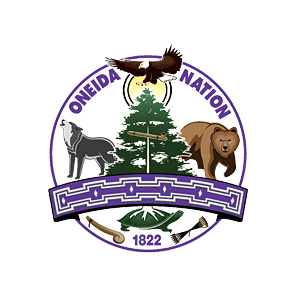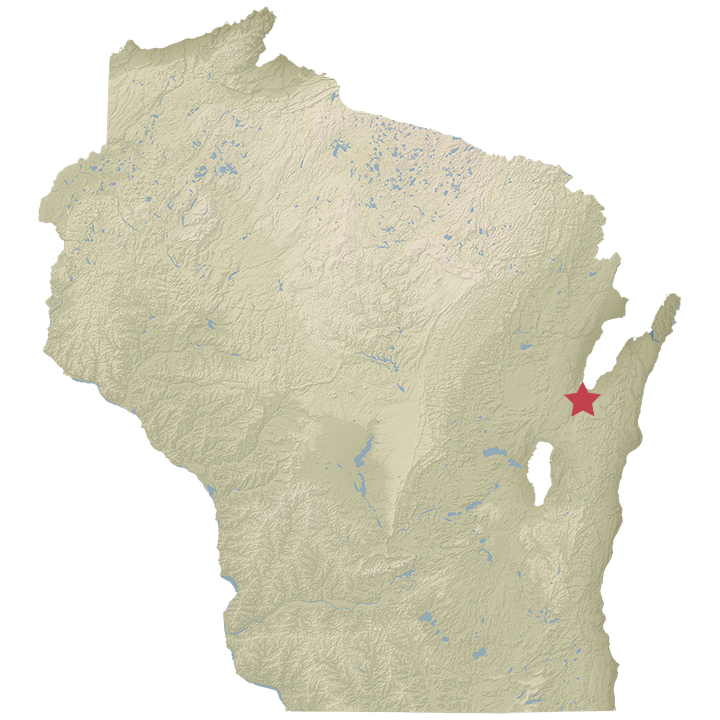
Brief History
The Oneida Nation is a sovereign government and a federally recognized American Indian nation of the United States. The Oneidas, along with the Mohawk, Seneca, Cayuga and Onondaga comprised the original Five Nations of the Iroquois Confederacy (also known as the Haudenosaunee) dating back to the 1500s, which later became the Six Nations when the Tuscarora joined in the 1700s.
During the Revolutionary War, the Oneida and the Tuscarora supported the colonies and served in General George Washington’s army. For this service, their lands were to be protected, a promise reflected in the 1794 Treaty of Canandaigua between the Oneida and the U.S.
The 1784 Treaty of Fort Stanwix was the first treaty between the Oneida and the United States that established peace between the Haudenosaunee and the colonial states, which operated under the Articles of Confederation. This treaty of peace established the government-to-government relationship between the Oneida and the U.S. that continues to exist today.
The Oneida lost more than 5 million acres of their homelands to the state of New York through the 1785 Treaty of Fort Herkimer and the 1788 Treaty of Fort Schuyler. In 1789, the states ratified the U.S. Constitution, which declared treaties of the United States to be the supreme law of the land. The U.S. adopted the Non-Intercourse Act of 1793, which prohibited the purchase of any Indian land by any person or entity without the federal government’s approval. Despite the Non-Intercourse Act, the state of New York entered a series of land transactions between 1795 and 1846 with the Oneida. These land transactions continued to deplete the Oneida land holdings in the state of New York until only 32 acres remained in Oneida possession by the 1820s.
During the 1820s, Oneidas relocated to what would become the state of Wisconsin to establish new homelands. The Oneidas purchased 5 million acres of land from the Ho-Chunk and Menominee to preserve sovereignty as a self-governing nation. This band of Oneidas became recognized as the Oneida Tribe of Indians of Wisconsin, now referred to as the Oneida Nation, who entered their final treaty with the United States in 1838, ten years before Wisconsin entered statehood.
The Treaty of 1838 between the Oneida and the United States established the present-day Oneida Indian Reservation boundaries located in present-day northeast Wisconsin.
The federal policy of the Indian Reorganization Act of 1934 recognized and strengthened the authority and autonomy of tribal governments. Implicit in the recognition of tribal authority is a tribal nation’s right to self-government. The Indian Reorganization Act of 1934 also provided the foundation for adopting a tribal constitution that would govern tribal members, lands, and interests.
In 1936, the Oneida people adopted the Oneida Constitution which established an elected governing body. Upon adoption of the Oneida Constitution, the United States federal government purchased 1,270 acres of land within the Oneida Reservation and placed that land into trust for the benefit of the Oneida Nation.
Present Day
Today, Oneida Nation is one of the largest employers in Brown County and Outagamie County. The Nation has law enforcement, a court system, healthcare, and social services for its members. In 2003, a four-tribe alliance of the Forest County Potawatomi, Oneida, San Manuel Band of Mission Indians, and Viejas Band of Southern California built a partnership venture and opened the Residence Inn in Washington D.C
The Oneida Business Committee is composed of nine members, meeting bi-monthly with decisions made by majority rule. Elections are held every three years with primary/post primary elections newly added, and terms are concurrent.
For additional information about the Oneida Nation, consider the following resources:
- Oneida History
- PBS Wisconsin Tribal Histories – Oneida History
- The Ways, Lady Thunderhawks: Leading The Way
The essay was altered and reprinted with permission from the Wisconsin Department of Public Instruction





